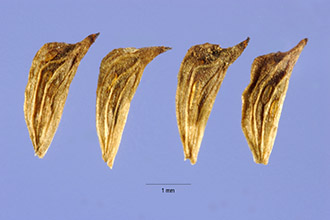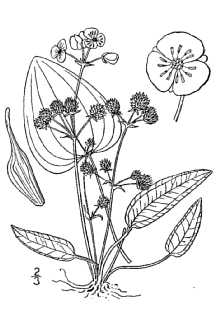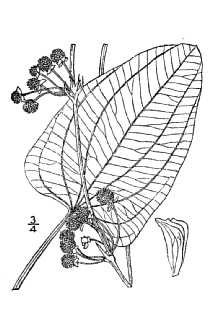Echinodorus radicans (Nutt.) Engelm.
Scientific Name: Echinodorus radicans (Nutt.) Engelm.

| General Information | |
|---|---|
| Usda Symbol | ECRA2 |
| Group | Monocot |
| Life Cycle | Perennial |
| Growth Habits | Forb/herb |
| Native Locations | ECRA2 |
Plant Guide
Use soil moisture sensors to measure the soil moisture of Echinodorus radicans (Nutt.) Engelm..
Fact Sheet
Alternate Names
None listed.
Uses
Creeping burhead is an attractive aquatic plant that is recommended for use in shallow ponds and pools. It may also be suitable for use in constructed wetlands.
Wildlife
benefits have not been documented but it can provide some cover for smaller species.
Status
Creeping burhead is listed as extirpated in Indiana and endangered in Maryland. This plant is considered an obligate wetland indicator species. Please consult the PLANTS Web site and your State Department of Natural Resources for this plant’s current status (e.g., threatened or endangered species, state noxious status, and wetland indicator values).
Weediness
This plant may become weedy or invasive in some regions or habitats and may displace desirable vegetation if not properly managed. Please consult with your local NRCS Field Office, Cooperative Extension Service office, state natural resource, or state agriculture department regarding its status and use. Weed information is also available from the PLANTS Web site at http://plants.usda.gov. Please consult the Related Web Sites on the Plant Profile for this species for further information.
Description and Adaptation
Adaptation
Adaptation
Creeping burhead is a creeping annual or short-lived perennial. The leaves are broadly heart shaped, 2-7 inches long and almost as wide. The principal veins are conspicuous and impressed on the upper surface of the leaf blade. The petioles are 4-20 inches long, enlarged and spongy towards the base. The flowering shoot (scape) can reach 3 feet or more in length; scapes are upright when young, often drooping and rooting at the tips to produce new plantlets. Numerous whorls of flowers with white petals and greenish centers are located along the scape. Flowering begins in June and continues until frost. The fruiting heads are round, bur like clusters of small brown seeds. The native range of the species is from Maryland south to Florida, west to Missouri and the panhandle of Texas. It is usually found growing in swamps, wet woodlands, marshes, and ditches. There are some indications that it prefers a slightly shaded location. Best growth is generally on wetland soils with fairly high organic matter. Creeping burhead distribution from USDA-NRCS PLANTS Database. For updated distribution, please consult the Plant Profile page for this species on the PLANTS Web site.
Establishment
Leflore Source creeping burhead, a selection of this species, is established using transplants, The creeping nature of this plant produces numerous small plantlets that can be dug and divided from the parent plant,
Management
Established plants will tolerate water depths up to one foot during the growing season, with greater depths acceptable when the plants are dormant. If the growing site is infertile, the plants will respond to two or three light applications of complete fertilizer during the growing season. Burning or mowing is not recommended.
Pests and Potential Problems
Occasional late-summer leaf dieback has been observed.
Environmental Concerns
Further work is needed to determine creeping burhead’s adaptation in wetlands subject to sewage effluent.
Control
Please contact your local agricultural extension specialist or county weed specialist to learn what works best in your area and how to use it safely. Always read label and safety instructions for each control method. Trade names and control measures appear in this document only to provide specific information. USDA NRCS does not guarantee or warranty the products and control methods named, and other products may be equally effective. Cultivars, Improved, and Selected Materials (and area of origin) Leflore Source creeping burhead was originally collected in the Mississippi Delta and was released as source identified material in 1996 by the Natural Resources Conservation Service (NRCS), the Mississippi Agricultural and Forestry Experiment Station (MAFES), and the Department of Wildlife and Fisheries at Mississippi State University.
Prepared By
Thomas C. Moss, USDA NRCS Jamie L. Whitten Plant Materials Center, Coffeeville, MS


